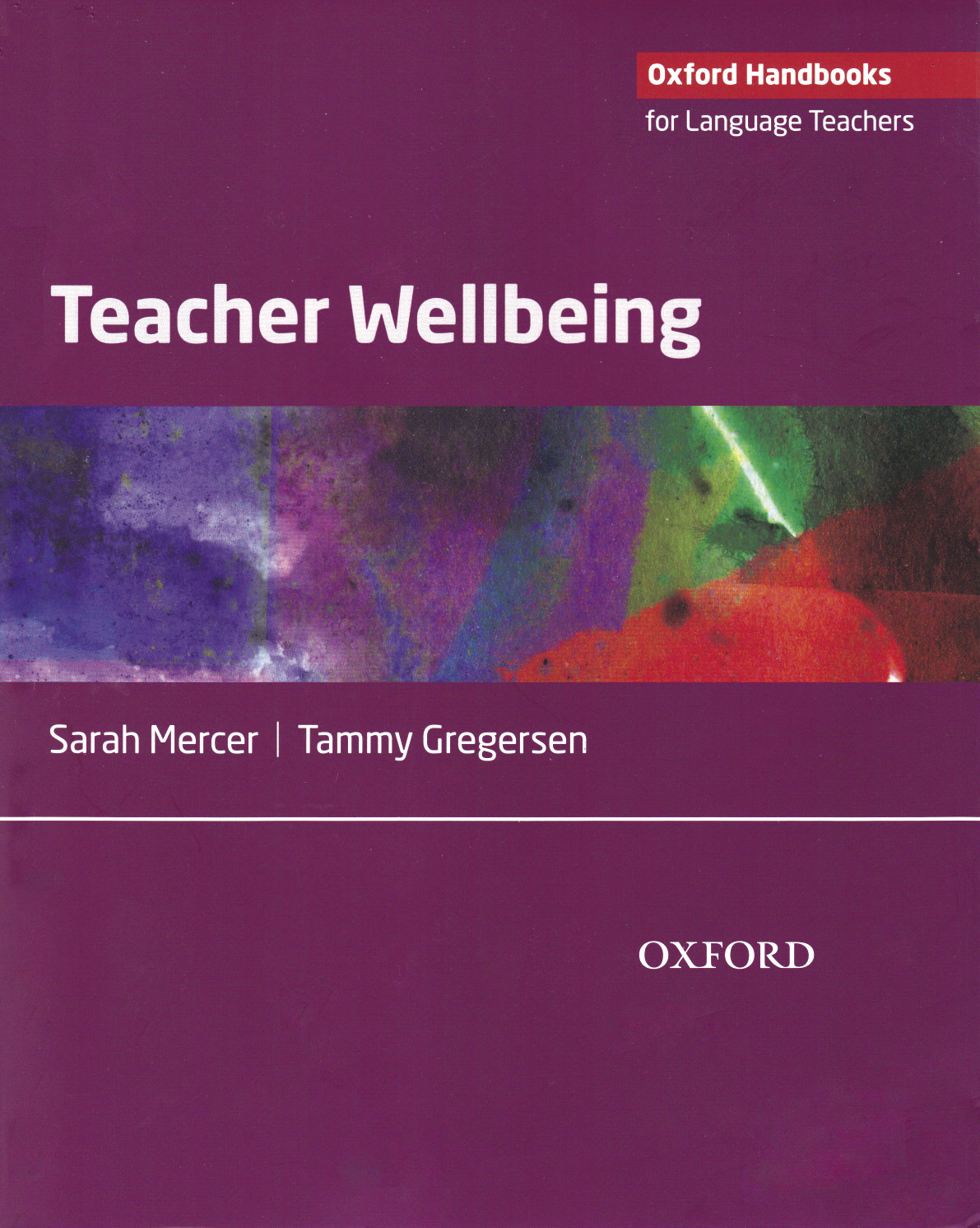Teacher Wellbeing
Teacher Wellbeing

by Sarah Mercer and Tammy Gregersen
OUP 2020
978-0-19-440563-8
This timely book encourages teachers to think about themselves for a change. The stresses of being a teacher are well documented and often include heavy workloads, ever-increasing amounts of admin, lack of financial rewards, lack of support and/or respect from parents and employers, difficult students, time spent in preparing lessons and materials, and other out-of-hours requirements ... the list goes on. Sometimes, you wonder why anyone would want to become a teacher in the first place – and it’s easy to see why burnout is a serious problem in our profession. In the current Covid-19 crisis, the stresses and strains of a teaching career are even more evident, with teachers having to scramble to learn new technologies and prepare new materials in different formats, in order to teach their lessons online and to keep their students on course, without being able to interact with them face-to-face.
However, it seems that those drawn to a teaching career are hard-wired to help other people or, as the authors of this book put it, they ‘have a heart for service to others’. If we accept that this is so, it is, perhaps, no wonder that the book begins with an exhortation for teachers to focus their attention on themselves for once. And the authors acknowledge that this may be hard for some people to do, without incurring feelings of guilt and a sense that they are being self-seeking or egocentric. Beginning with Chapter 1 (‘It’s all about me’), the authors present eight chapters with ‘me’ in the title: ‘Me and my workplace’, ‘Me and my mind’, ‘Me and my motivation’, ‘Me and my relationships’, ‘Me and my emotions’, ‘Me and my physical wellbeing’ and ‘Me and my future’ – all of which coax and cajole those who generally spend most of their time thinking about other people and their demands into considering themselves and their own needs.
Most of the book, necessarily, focuses on what individual teachers can do to promote their own wellbeing, though there is a recognition that teacher wellbeing is a shared responsibility, and Chapter 2 does go into the characteristics of institutions that foster job satisfaction – and the people in charge of educational establishments would do well to look at this part of the book, even if they don’t read the rest. (Teachers could always lure reluctant bosses in with the suggestion that improving teacher wellbeing ultimately leads to better teachers, and having better teachers might result in greater prestige and greater profits.)
Each chapter begins with an introduction, followed by more detailed explorations of the different aspects of the main topic, interspersed with activities that can be done alone, though it might be even more productive to do some of these with colleagues (or, at least, compare results with a friend or colleague). There are also inspirational quotations scattered in the margins throughout, offering the thoughts of a host of thinkers and writers – from Gandhi and the Dalai Lama to Bill Gates and Eleanor Roosevelt. The chapter ends with a summary, a series of questions for reflection and three books or articles in a ‘Recommended reading’ section. I like the way the suggestions are restricted to three items each time: it can be daunting to be faced with a long list of things to read – something likely to result in more stress, and perhaps even feelings of guilt, if it proves impossible to track down and get through them all. Three items seem much more doable. For those with plenty of time on their hands (surely not teachers!) there is a full bibliography at the back of the book, as well as a helpful glossary of terms.
I suppose that, in essence, this is a self-help book, but one without the preaching tone or false optimism characteristic of some works in that genre. It doesn’t set out to offer a prescription for wellbeing, but a selection of ideas which teachers can choose from, according to their own situations and their own needs. I can see it being of great help to teachers who actively want to remain in the profession, but have received a bit of a jolt to their confidence or a dent in their motivation. Each chapter can be read in isolation, and readers can dip in and out of the book according to their current needs. The book certainly doesn’t offer a panacea for all the problems that teachers might experience, but it does go some way towards persuading them that they have the power in their own hands to make things better and to nurture and enhance their own wellbeing. This is a welcome message at any time, but perhaps most of all now when there is so much uncertainty in the world.
Sophie Hughes, Preston, UK
Comments
Write a Comment
Comment Submitted